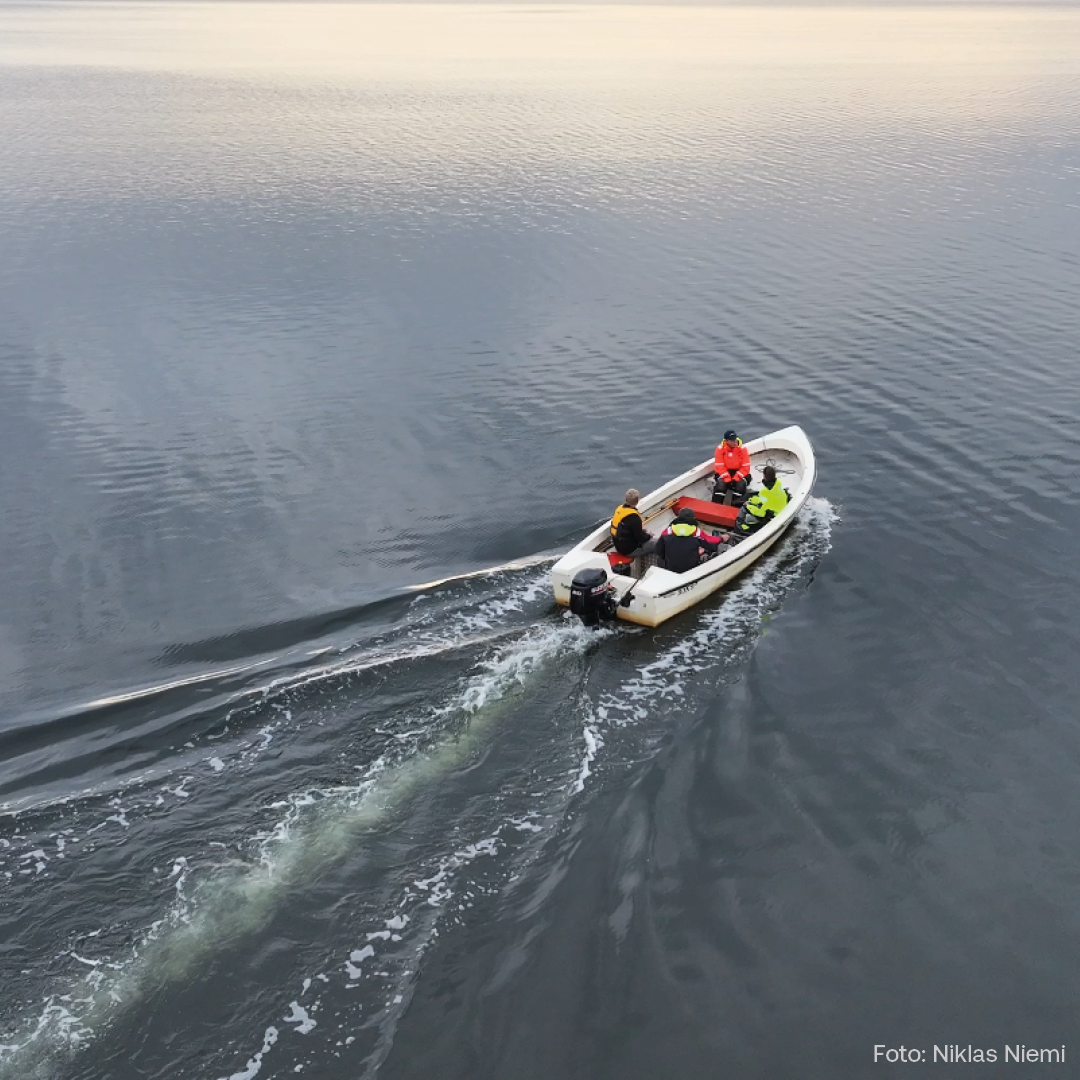It has been a year since the ReCod project, in collaboration with the Gävleborg County Administrative Board, released 56,000 small cod larvae into Gävlebukten – an attempt to contribute to the re-establishment of a stock that was previously a natural part of the ecosystem. Now we are back, curious to see how the larvae have fared during their first critical year. Join us out on the water early one morning as we search for answers beneath the surface.
The sun is still rising above the horizon when we gather early one morning on the beach just outside Gävle. Professional fisherman Thomas Karlsson is already busy preparing his boat, which is gently rocking in the boathouse. In the car park, Ellen Schagerström, project manager for ReCod, and Niklas Niemi, fisheries officer at the Gävleborg County Administrative Board, unload the car and, with practised hands, lift buckets, boxes and other equipment onto the boat.
We put on our life jackets and we are ready to set off. The water ahead of us is calm and still, and Thomas nods approvingly – perfect conditions for today’s task. With his help, the boat will take us to six different locations at Eggegrund, where the project team laid fishing nets the night before.
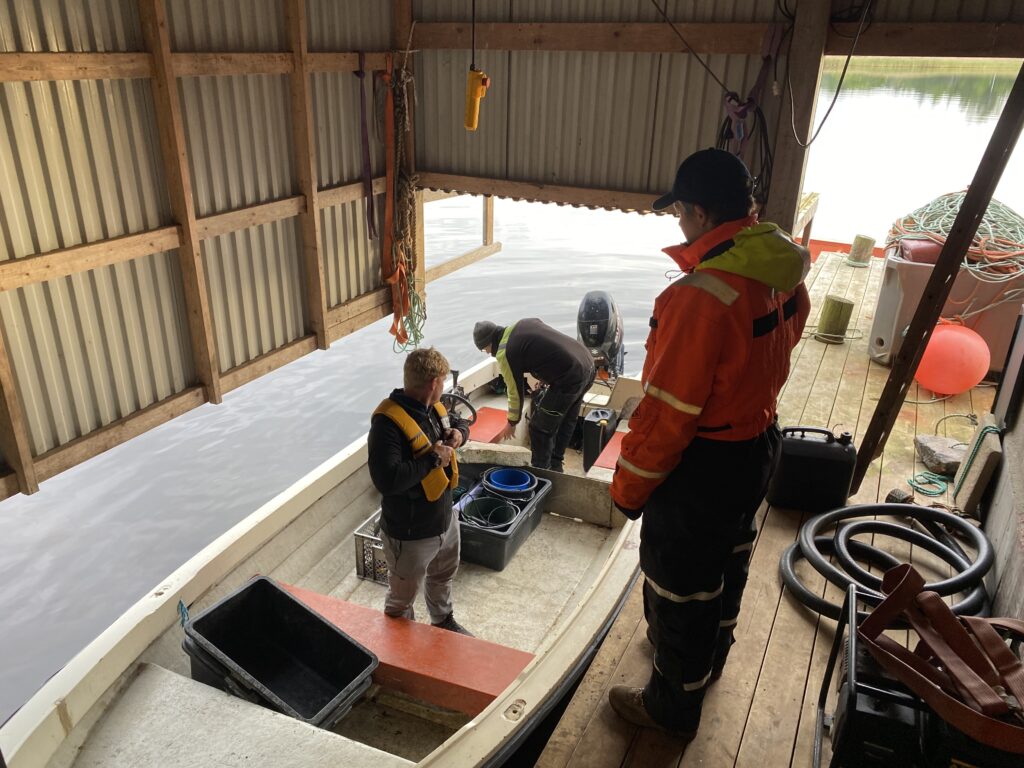
An attempt to help cod return to Gävle Bay
The test fishing is being carried out to monitor how the cod larvae released last year are faring, an initiative made possible by support from the Ålandsbanken.
Gävlebukten has historically had abundant cod stocks, but today the conditions for cod to reproduce here are lacking. ReCod has previously released cod larvae further south in the Baltic Sea, where the salinity is higher, so the experiment in Gävlebukten was a valuable new experience for the project.
‘Prior to this release, we raised the cod larvae in a lower salinity than we normally do in the ReCod project, in order to adapt them to the environmental conditions in Gävlebukten and thus increase their chances of survival. But the larval stage is still very sensitive, so we will have to see how well they have fared,’ says Ellen.
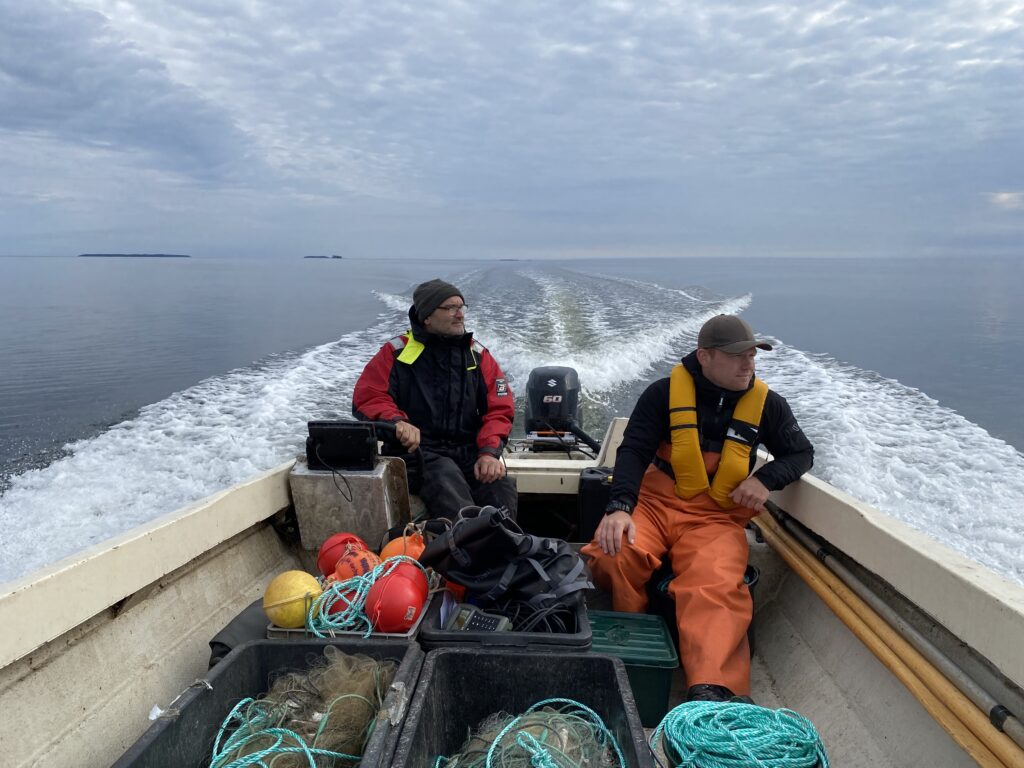
Small cod in a large sea basin
We chug across the calm bay and make our way to the red buoys that mark the release sites. Once there, the work proceeds quickly and methodically. The nets are pulled on board one by one – filled with fish, but without a trace of cod. Still, Niklas sounds hopeful.
‘Of course, we hope to catch some of our cod. But it’s a large sea basin, so even if the larvae have survived, it’s a bit like looking for a needle in a haystack,’ he says.
With the nets full, we return to shore. Now the nets must be examined carefully and systematically. It turns out to be quite a fiddly job – to avoid damaging the fish or the nets unnecessarily. With gentle hands, each fish is loosened, identified, weighed and measured. All data is carefully noted by the County Administrative Board and reported.
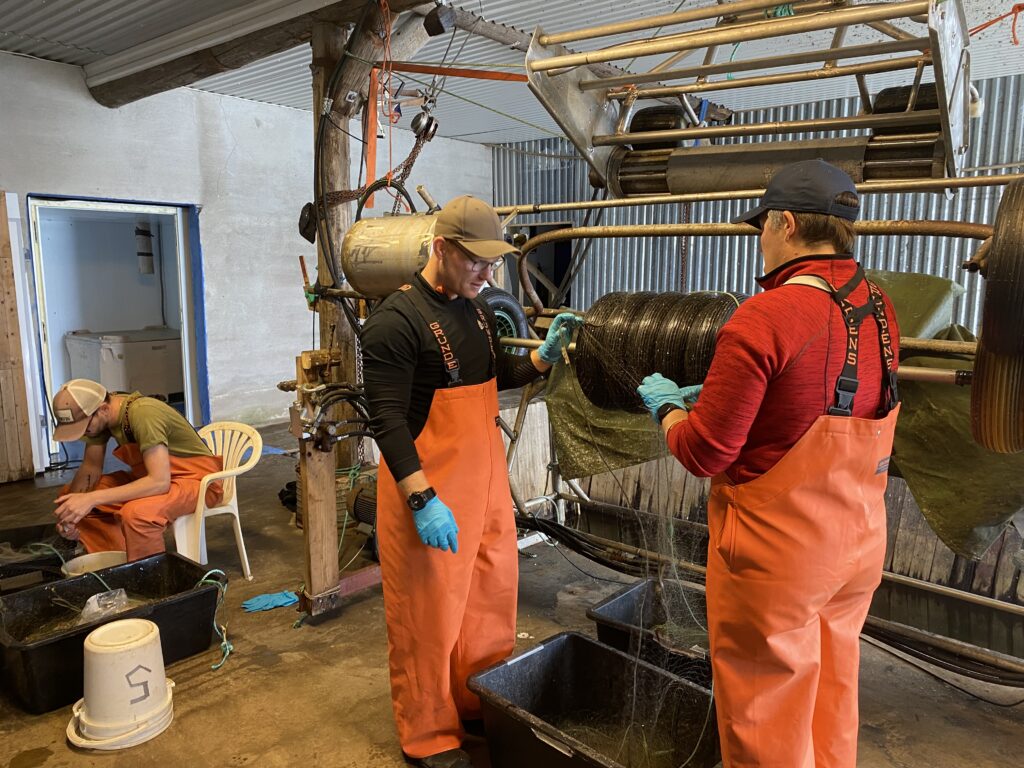
No cod in the nets, but the research continues
Herring, whitefish, seaweed eel and sculpin are some of the species caught in the net. But in the end, it is clear – there was no cod this time. What does that mean?
‘Of course, it’s disappointing that we didn’t catch any cod. But we don’t know if that means the larvae survived or not. We can only conclude that we didn’t get any fish this time,’ says Ellen.
Despite the lack of catch, the project has made important progress. The experience of growing larvae in a lower salinity than before is a lesson in itself and shows that releases can be adapted to other environmental conditions, enabling more trials in the future.
And the ReCod project is already looking ahead. After several years of work hatching and releasing cod larvae, the next step is now being prepared: feeding the larvae to small cod measuring a couple of centimetres before they are released.
‘We believe that the chances of survival increase when the fish have had time to grow. At 2–3 centimetres, they are much more resilient and also large enough not to be eaten by sticklebacks to the same extent’, says Ellen.
The first releases of small cod are planned in Tvären, a bay adjacent to BalticWater’s new laboratory where the project is based. But both Ellen and Niklas also see Gävlebukten as a place with future potential.
‘The County Administrative Board would like to see more releases here in the future. The fact that we also caught plenty of barnacles is a very positive sign – they are one of the cod’s most important food sources and show that the environment still has the capacity to support cod,’ says Niklas Niemi.
‘Many of us are eager to see cod return to Gävle Bay. Today, there is a high density of the invasive species black goby, and a stronger cod population would, among other things, help to keep its numbers down. This work is an important step along the way and gives both us and the public hope for the future,’ he concludes.
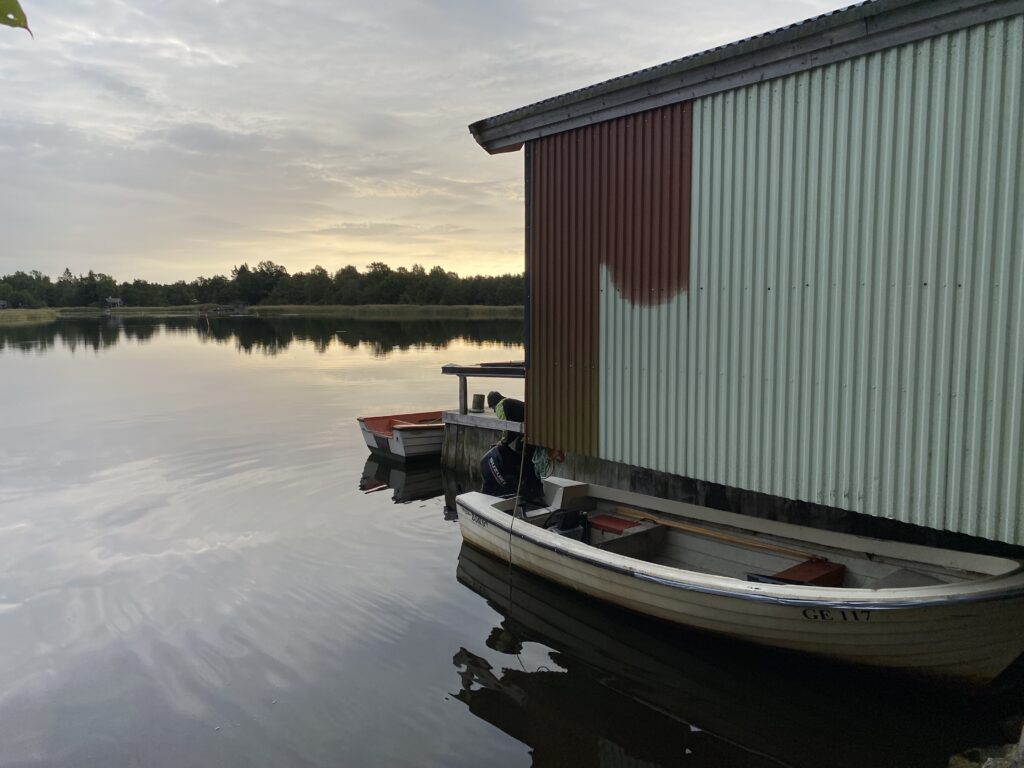

About ReCod
ReCod – release of small cod in the Baltic Sea is one of BalticWater’s largest and longest-running projects. The work began in 2020 at the Ar research station on Gotland, where we conducted trials involving the release of 4–6-day-old cod larvae at several locations along the east coast to investigate whether the larvae survive and are able to establish themselves.
In total, almost 1,000 cod have lived at the station, and together they have produced nearly 2.5 million cod larvae that have been released into the Baltic Sea. If the experiments are successful, there is a possibility of re-establishing cod in more locations in the Baltic Sea, which will increase the chances of preserving and protecting the unique eastern stock.
From 2025, ReCod will be run at BalticWater’s new fish research laboratory in Studsvik, outside Nyköping. Here, the cod larvae will initially be fed until they are 2–3 cm in size, and then to larger fish for release and research. The aim is to find the age and size of fish that have the best chance of surviving in the wild.
ReCod is being carried out and financed by BalticWaters, with support from Uppsala University and other partners.
